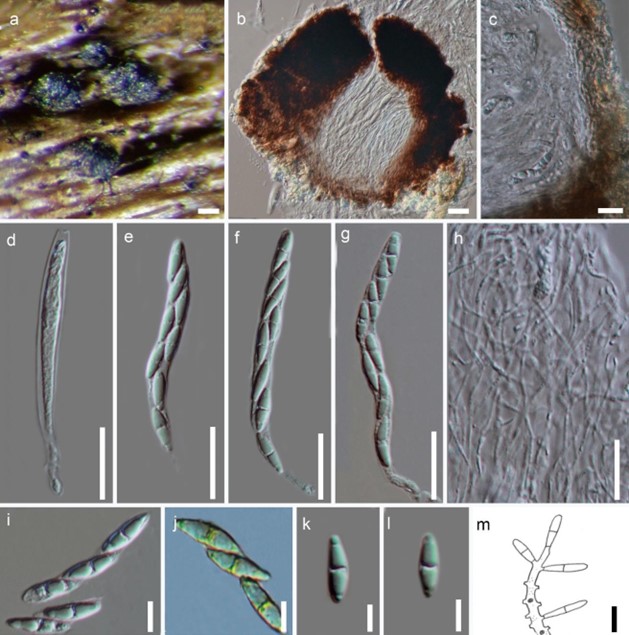Cylindrotrichum Bonord., Handb. Allgem. mykol. (Stuttgart): 88 (1851)
MycoBank number: MB 7881; Index Fungorum number: IF 7881; Facesoffungi number: FoF 13554; 15 morphological species (Species Fungorum 2020), 6 species with sequence data
Type species – Cylindrotrichum oligospermum (Corda) Bonord.
Notes – Cylindrotrichum was introduced by Bonorden (1851) with C. oligospermum as the type species. Reticulascus was introduced by Réblová et al. (2011) for a holomorphic species R. tulasneorum (asexual morph C. oligospermum, Réblová & Gams 1999), the generic type, and R. clavatus (asexual morph Cylindrotrichum clavatum). Réblová et al. (2016b) recommended the use of Cylindrotrichum over Reticulascus given its widespread use, priority, and greater number of names. Cylindrotrichum oligospermum is illustrated in this entry.

Figure 220 – Cylindrotrichum oligospermum (Material examined – CZECH REPUBLIC, Southwestern Bohemia, Javornická, Hornatina Mts, Strašín, near Sušice, on dead branch of Sambucus nigra L. (Adoxaceae), 21 October 1997, M. Svrček, PRM 842978, holotype). a Ascomata on the host. b Section through ascoma. c Peridium. d-g Asci. h Interthecial filaments. i-l Ascospores (j Ascospores stained with Meltzer reagent). m Conidia (redrawn from Réblová & Gams 1999). Scale bars: a = 100 µm, b, c = 50 µm, d-g = 25 µm, h-l = 10 µm, m = 20 µm.

Figure 221 – Cylindrotrichum oligospermum a-d Asexual morph of Reticulascus tulasneorum, CBS 101319, PR M 842978, redrawn from Réblová & Gams (1999) e Menispora oligosperma, redrawn from Corda (1838). a Habit sketch of conidiophores and setae. b-d Conidiophores and hyaline conidia of Reticulascus tulasneorum. e A flake of conidiophore and spores of Menispora oligosperma. Scale bars: b-d = 10 µm.
Species
